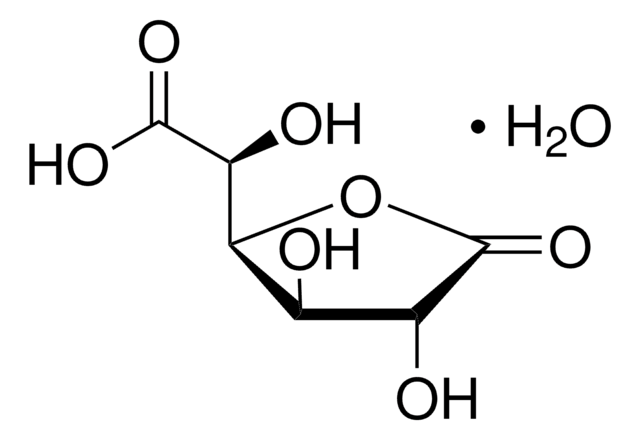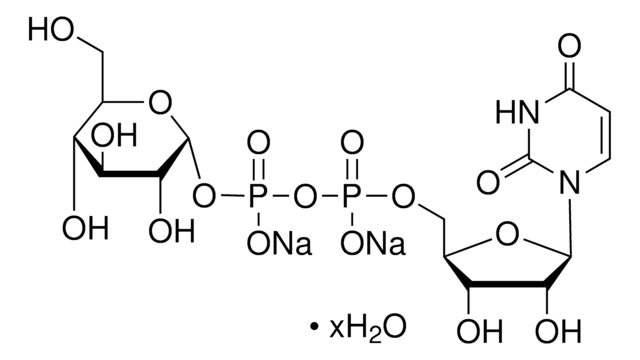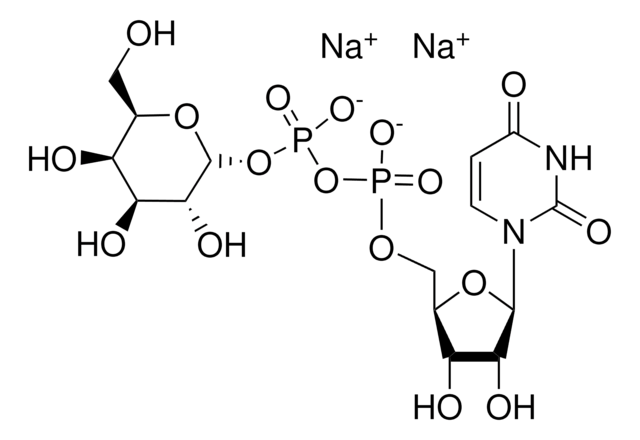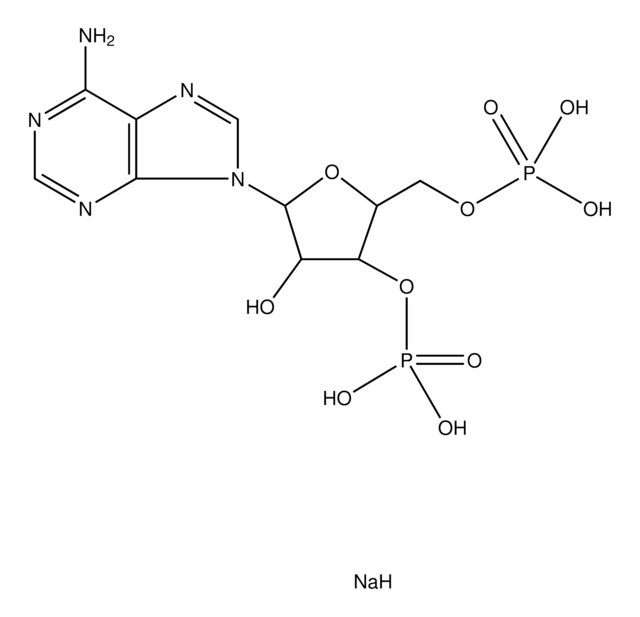U6751
Ácido uridina 5′-difosfoglucurónico trisodium salt
98-100%
Sinónimos:
UDP-GlcA, UDPGA, Ácido uridina-difosfato-glucurónico trisodium salt, Ácido uridina[5′]-difosfo[1]-α-D-glucopiranosurónico trisodium salt
About This Item
Productos recomendados
biological source
bovine liver
rabbit muscle
yeast
Quality Level
assay
98-100%
form
powder
storage temp.
−20°C
SMILES string
[Na+].[Na+].[Na+].O[C@@H]1[C@@H](O)[C@H](O[C@@H]([C@H]1O)C([O-])=O)OP([O-])(=O)OP([O-])(=O)OC[C@H]2O[C@H]([C@H](O)[C@@H]2O)N3C=CC(=O)NC3=O
InChI
1S/C15H22N2O18P2.3Na/c18-5-1-2-17(15(26)16-5)12-9(22)6(19)4(32-12)3-31-36(27,28)35-37(29,30)34-14-10(23)7(20)8(21)11(33-14)13(24)25;;;/h1-2,4,6-12,14,19-23H,3H2,(H,24,25)(H,27,28)(H,29,30)(H,16,18,26);;;/q;3*+1/p-3/t4-,6-,7+,8+,9-,10-,11+,12-,14-;;;/m1.../s1
InChI key
XXXUNWUNTOMVIG-QWGSIYABSA-K
¿Está buscando productos similares? Visita Guía de comparación de productos
Categorías relacionadas
Application
Biochem/physiol Actions
Storage Class
11 - Combustible Solids
wgk_germany
WGK 3
flash_point_f
Not applicable
flash_point_c
Not applicable
ppe
Eyeshields, Gloves, type N95 (US)
Certificados de análisis (COA)
Busque Certificados de análisis (COA) introduciendo el número de lote del producto. Los números de lote se encuentran en la etiqueta del producto después de las palabras «Lot» o «Batch»
¿Ya tiene este producto?
Encuentre la documentación para los productos que ha comprado recientemente en la Biblioteca de documentos.
Los clientes también vieron
Artículos
Glycosyltransferases were initially considered to be specific for a single glycosyl donor and acceptor, which led to the one enzyme-one linkage concept. Subsequent observations have refuted the theory of absolute enzymatic specificity by describing the transfer of analogs of some nucleoside mono- or diphosphate sugar donors.
Nuestro equipo de científicos tiene experiencia en todas las áreas de investigación: Ciencias de la vida, Ciencia de los materiales, Síntesis química, Cromatografía, Analítica y muchas otras.
Póngase en contacto con el Servicio técnico













